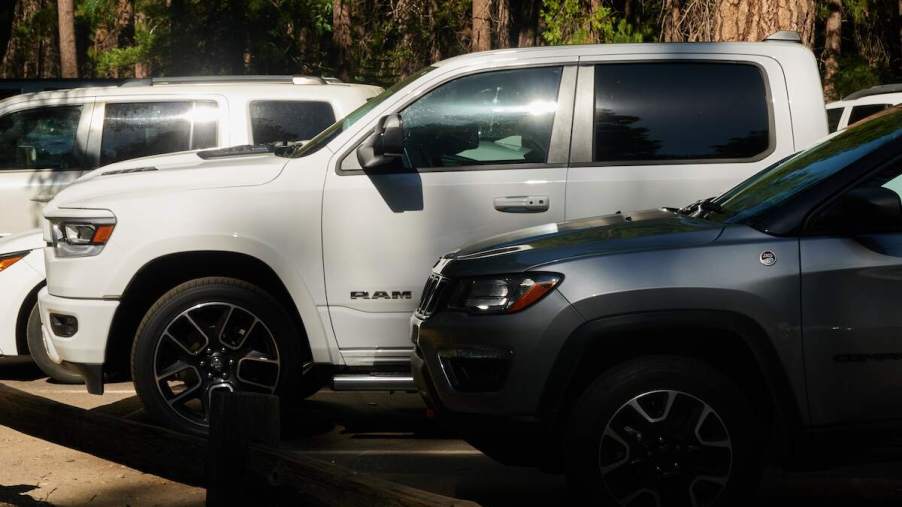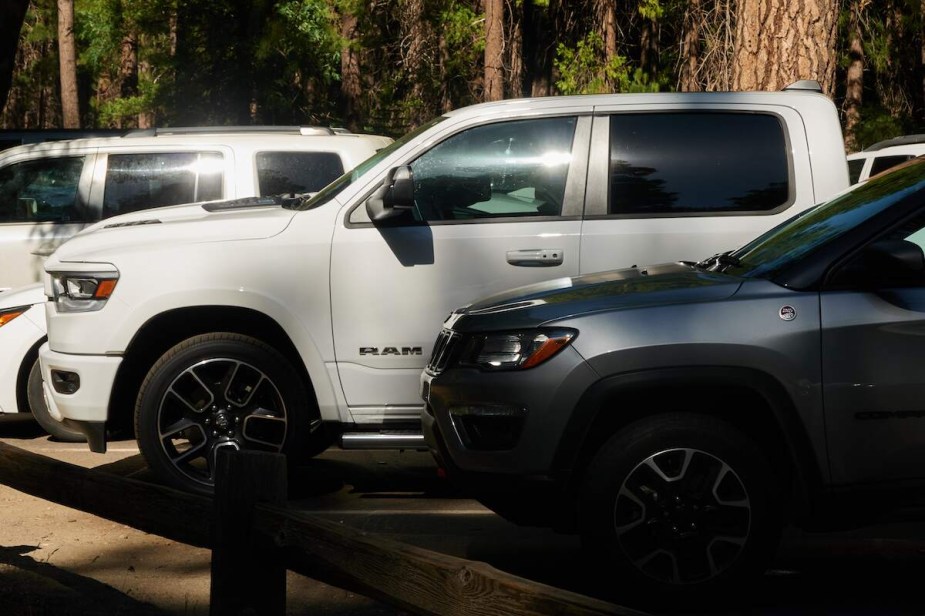
Do Trucks or SUVs Weigh More on Average?
Vehicles in the American automotive market have been increasing in weight, getting bigger, and gaining more power for the past few decades. While safety concerns and rising fuel prices decreased the size of automobiles in the 1970s, the size of pickup trucks and SUVs has been growing ever since. So, which vehicle class is the best/worst on this front? Is it pickup trucks or SUVs?
Pickup trucks and SUVs are bigger than ever before

According to CarScoops, since 1975, pickup trucks have increased in weight by 27%, and SUVs are now heavier by at least 5%. While pickup trucks and SUVs have gotten significantly bigger, they have become more powerful. Interestingly, the average new vehicle has seen a 79% increase in power since the early ’70s, with pickup trucks having the most significant gain at an astounding 143%. Meanwhile, SUVs have experienced a 72% gain in horsepower.
Beginning in 1981, horsepower in vehicles has increased in 33 out of 38 years. While half of all new cars in 1980 had a range between 100 hp and 150 hp, by 2020, the average pickup could churn 247 hp with ease.
The 2023 Ford Super Duty F-350 XLT has a curb weight of 6,734 pounds, equipped with a 7.3-liter V8 engine that can generate 430 hp and 485 lb-ft of torque, coming a long way from the earlier days of the lighter aluminum F-150 pickup truck. Meanwhile, the GMC Hummer electric SUV weighs in at an outrageous 9,063 pounds, with a GVWR of 10,660 pounds, making it one of the largest passenger vehicles on the market.
While pickup trucks and SUVs have grown in size over the past few decades, pickup trucks weigh significantly more than previous models for various reasons.
Why do trucks keep increasing in weight?
For over 40 years, the Ford F-150 pickup has been the best-selling truck in America. According to Axios, in the past four decades, pickup trucks have “become bigger, heavier and more tricked out, and they’ve transformed from workhorse vehicles to family cruisers.” Around 2010, smaller pickups took a backseat to full-size luxury trucks and SUVs that now dominate the market.
Despite the larger size, research suggests approximately one-third of pickup owners rarely use their trucks for hauling, and two-thirds rarely tow anything. Axios reports most truck owners now utilize their vehicles for “shopping, errands, commuting, and Sunday drives.” Their research indicates, “When placed side-by-side, the trend of shrinking beds and growing cabs is clear. The first generation of F-150 were 36% cab and 64% bed by length. By 2021, the ratio flipped, with 63% cab and 37% bed.”
As the demand for more power, enhanced luxury features, larger engines, and increased space for the family grew, pickup trucks continued to get heavier to accommodate consumers’ desire for comfort and everyday use.
Are electric pickup trucks getting heavier and causing safety issues?
With pickup trucks and SUVs receiving the lion’s share of automotive sales in recent years, automakers are gaining substantial profits, helping drive automation and increased electric vehicle production.
Electric vehicles, which are far more fuel-efficient than gas-powered pickup trucks and SUVs, are also getting heavier due to battery size. The increased size is causing more safety issues, especially for electric trucks like the Rivian R1T. The full-size electric pickup truck weighs almost 7,000 pounds, approximately 1,000 more pounds than the heaviest F-150 model.
So, while automakers push toward cleaner energy and electric vehicles, the weight of most pickup trucks and SUVs does not appear to be getting smaller anytime soon.


